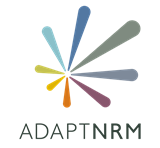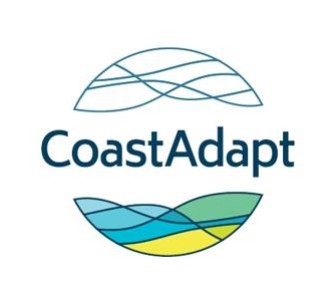Tools for Managing Climate Change
There are a number of tools and decision frameworks that can be used in their current form, or if needed be modified to assist in planning for climate change.
Many of the tools are specific to natural assets, such as CoastAdapt, which specifically assists NRM planners make better planning decisions around coastal assets, and their responses to sea level rise. Others can assess multiple natural assets – many at the same time, over a range of different climate change predictions and/or timeframes. Some can help make better decisions to develop adaptation responses to climate change, some are used to determine landscape priorities for carbon sequestration options such as strategic revegetation programs.
It is expected that as knowledge is improved and as current management practices are tested, new more innovative tools will be developed. Below is a list of current best practice decision-making tools that can be applied for managing the region’s natural assets.
.jpg) Environmental Systems Modelling Platform (EnSym) uses scientific models to understand the impact that actions e.g. revegetation, have on the landscape. Users can visualise, test and interpret results of changes in climate, land use and land management practices through a single interface. EnSym utilises temporal (rainfall and temperature) and spatial (soil type, elevation, land use and groundwater) data as inputs and other data sources added as required.
Environmental Systems Modelling Platform (EnSym) uses scientific models to understand the impact that actions e.g. revegetation, have on the landscape. Users can visualise, test and interpret results of changes in climate, land use and land management practices through a single interface. EnSym utilises temporal (rainfall and temperature) and spatial (soil type, elevation, land use and groundwater) data as inputs and other data sources added as required.
More information on EnSym can be found at https://ensym.dse.vic.gov.au/cms/
 Multi-Criteria Analysis Shell for Spatial Decision Support (MCAS-S) is a software tool developed by the Australian Bureau of Agricultural and Resource Economics and Sciences. It provides a powerful tool for spatial information assessment, conveying complex information in a readily understood manner. It provides an:
Multi-Criteria Analysis Shell for Spatial Decision Support (MCAS-S) is a software tool developed by the Australian Bureau of Agricultural and Resource Economics and Sciences. It provides a powerful tool for spatial information assessment, conveying complex information in a readily understood manner. It provides an:
- insightful desktop combination and study of different types of mapped information
- understanding of the relationships between the decision-making process and the available spatial data
- interactive 'live-update' and mapping of alternative scenarios
GIS programming is not required, removing the usual technical obstacles to non-GIS users. More information on MCAS-S can be found at www.agriculture.gov.au/abares/data/mcass.
 SimClim is a computer modelling system for examining the effects of climate variability and change over time and space. It is a customised GIS which includes tools for the spatial analysis of climate variability and change and associated impacts on various social-economic sectors. It allows for customised models of scale and spatial resolution and additional impact models can be included for additional analysis.
SimClim is a computer modelling system for examining the effects of climate variability and change over time and space. It is a customised GIS which includes tools for the spatial analysis of climate variability and change and associated impacts on various social-economic sectors. It allows for customised models of scale and spatial resolution and additional impact models can be included for additional analysis.
More information on SimClim can be found at www.climsystems.com/simclim.
 The Investment Framework for Environmental Resources (INFFER) assists decision makers through a series of facilitated workshops, to assess and rank environmental and natural resource projects, comparing aspects such as value for money, degrees of confidence in technical information and the likelihood of achieving stated goals. INFFER focuses on assets – specific areas of the natural environment that are considered to have high value from a public perspective. It can also factor in the impacts of anticipated climate change.
The Investment Framework for Environmental Resources (INFFER) assists decision makers through a series of facilitated workshops, to assess and rank environmental and natural resource projects, comparing aspects such as value for money, degrees of confidence in technical information and the likelihood of achieving stated goals. INFFER focuses on assets – specific areas of the natural environment that are considered to have high value from a public perspective. It can also factor in the impacts of anticipated climate change.
More information on INFFER can be found at www.inffer.com.au
The Catchment Assessment Framework (CAF) is a process-based deliberative tool that is used to assess the climate change adaptation potential of NRM actions, and by so doing allows the incorporation of climate change adaptation into NRM planning. It contains a series of preparatory steps that must be done in order to get to the assessment stage. It assists in defining strategic interventions (i.e. program planning). It should be used after the goals and management objectives have been set. As the tool is holistic and strategic it is not so useful for specific and detailed operational and project planning at a local level. CAF was developed to assist catchment-level management, but it can be adapted to apply at any scale.
More information on CAF can be found at www.csu.edu.au/research/ilws.
 AdaptNRM is a national initiative that aims to support NRM groups in climate adaptation planning. Adaptation information is delivered at a national scale, but is designed to suit regions in order to complement other NRM projects and existing NRM activities that incorporate locally-specific issues and solutions. AdaptNRM uses a user-driven approach to developing NRM-relevant information. Information and materials are accessible through a series of five easy-to-understand modules which deliver simple, synthesised guidance which is supported by technical guides and data sets. The five modules are;
AdaptNRM is a national initiative that aims to support NRM groups in climate adaptation planning. Adaptation information is delivered at a national scale, but is designed to suit regions in order to complement other NRM projects and existing NRM activities that incorporate locally-specific issues and solutions. AdaptNRM uses a user-driven approach to developing NRM-relevant information. Information and materials are accessible through a series of five easy-to-understand modules which deliver simple, synthesised guidance which is supported by technical guides and data sets. The five modules are;
- The NRM Adaptation Checklist: Supporting Climate Adaptation Planning and Decision Making for Regional NRM
- Weeds and Climate Change: Supporting Weed Management Adaptation
- Implications of Climate Change for Biodiversity: A Community-level Modelling Approach
- Helping Biodiversity Adapt: Supporting Climate Adaptation Planning using a Community-level Modelling Approach Shared Learning
More information on AdaptNRM can be found at www.AdaptNRM.org
Currently being developed by NCCARF, CoastAdapt will provide practical guidance on how to manage the risks from clim ate change and sea-level rise, together with the associated physical, social and economic risks. The tool will be national in scope, and will include access to sufficient information and knowledge to ensure that it is applicable for the range of climates and regulatory and planning systems throughout Australia. CoastAdapt will focus on the needs of government, particularly at the local level, but will be applicable to the needs of all coastal managers including natural resource managers and coastal infrastructure operators. It will also consider natural and built assets and will be designed to meet planning and decision-making needs in coastal areas of high biodiversity, of new developments and where substantial assets are already at some risk from coastal climate hazards.
ate change and sea-level rise, together with the associated physical, social and economic risks. The tool will be national in scope, and will include access to sufficient information and knowledge to ensure that it is applicable for the range of climates and regulatory and planning systems throughout Australia. CoastAdapt will focus on the needs of government, particularly at the local level, but will be applicable to the needs of all coastal managers including natural resource managers and coastal infrastructure operators. It will also consider natural and built assets and will be designed to meet planning and decision-making needs in coastal areas of high biodiversity, of new developments and where substantial assets are already at some risk from coastal climate hazards.
More information on CoastAdapt can be found at www.nccarf.edu.au/content/coastal-tool-overview.
The Landscape Futures Analysis Tool (LFAT) enables users to consider how their region may change under different combinations of climate, carbon and agricultural commodity prices, and the cost of agricultural production. It is based on good science, ‘climate-ready’ planning for biodiversity conservation, carbon sequestration, weed management and agricultural production. The computer-based tool is interactive and can compute hundreds of calculations to analyse complex interactions. It can readily generate 256 alternative scenarios of the future, drawing on different combinations of:
- Climate – four options, from ‘baseline’ through to ‘severe warming and drying’.

- Agricultural commodity prices – four options for wheat, wool and sheep meat, from 50% to 200% of 2012 prices.
- Cost of production – four options, from 50% to 200% of 2012 commodity prices.
- Carbon prices – four options, from $15 to $60 per tonne CO2.
It can also project future distributions for about 400 native plant and 70 weed species, based on alternative climate scenarios. LFAT has been developed by the University of Adelaide and the CSIRO, in collaboration with regional NRM bodies and other interested parties.
More information on LFAT can be found at www.lfat.org.au








